Simple vector addition
Remember that vectors are mathematical
objects just like numbers on a number line: they can be
added, subtracted, multiplied, and divided. Addition is
perhaps the easiest vector operation to visualize, so we'll
begin with that. If vectors with common angles are added,
their magnitudes (lengths) add up just like regular scalar
quantities:

Similarly, if AC voltage sources with the
same phase angle are connected together in series, their
voltages add just as you might expect with DC batteries:
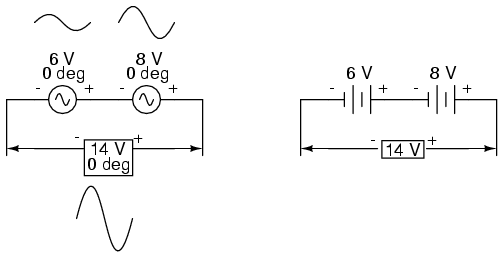
Please note the (+) and (-) polarity marks
next to the leads of the two AC sources. Even though we know
AC doesn't have "polarity" in the same sense that DC does,
these marks are essential to knowing how to reference the
given phase angles of the voltages. This will become more
apparent in the next example.
If vectors directly opposing each other (180o
out of phase) are added together, their magnitudes (lengths)
subtract just like positive and negative scalar quantities
subtract when added:
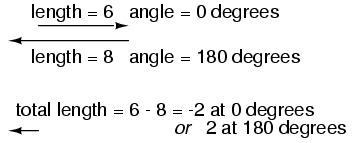
Similarly, if opposing AC voltage sources
are connected in series, their voltages subtract as you
might expect with DC batteries connected in an opposing
fashion:
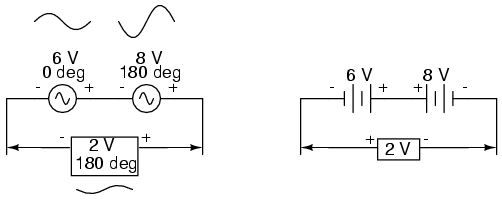
Determining whether or not these voltage
sources are opposing each other requires an examination of
their polarity markings and their phase angles.
Notice how the polarity markings in the above diagram seem
to indicate additive voltages (from left to right, we see -
and + on the 6 volt source, - and + on the 8 volt source).
Even though these polarity markings would normally indicate
an additive effect in a DC circuit (the two voltages
working together to produce a greater total voltage), in
this AC circuit they're actually pushing in opposite
directions because one of those voltages has a phase angle
of 0o and the other a phase angle of 180o.
The result, of course, is a total voltage of 2 volts.
We could have just as well shown the
opposing voltages subtracting in series like this:
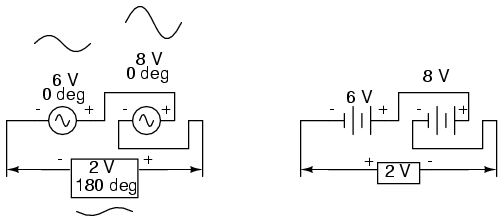
Note how the polarities appear to be opposed
to each other now, due to the reversal of wire connections
on the 8 volt source. Since both sources are described as
having equal phase angles (0o), they truly are
opposed to one another, and the overall effect is the same
as the former scenario with "additive" polarities and
differing phase angles: a total voltage of only 2 volts.
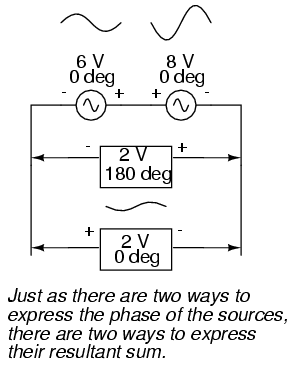
The resultant voltage can be expressed in
two different ways: 2 volts at 180o with the (-)
symbol on the left and the (+) symbol on the right, or 2
volts at 0o with the (+) symbol on the left and
the (-) symbol on the right. A reversal of wires from an AC
voltage source is the same as phase-shifting that source by
180o.
 |